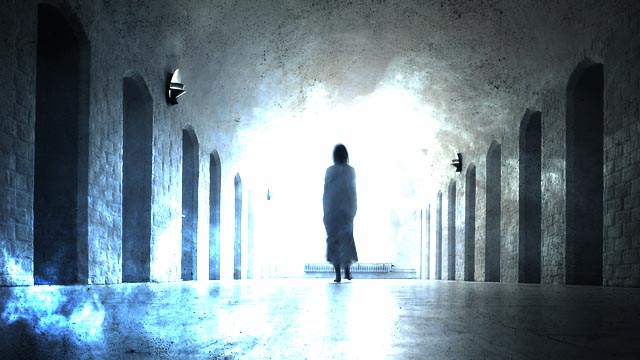SUMMARY
This is AI generated summarization, which may have errors. For context, always refer to the full article.

When we remember those who have passed on, we would long for them and ask ourselves what would they have done or said if they were still living today. It is not uncommon to hear of people asking and claiming to receive signs from the dead.
It’s a sign, we say. We see things that happen that are seemingly unprompted by the normal course of things and attribute them to our loved ones’ way of guiding us in this life that they have left.
A few days before my husband died, he clearly told me this: “If you hear anything in the house that is unusual and no one else is around, call the police because that would not be me. I am pretty sure that even if there were an afterlife, getting your attention with silly noise would still not at all be my style.”
He left me with that sobering assurance, along with a life lived to the fullest so strewn with meaning and inspiration for all of us he left behind, that I felt like I would not have learned anything at all if I asked for more beyond the life we had together. My mother on the other hand, has interpreted every single flutter and movement of the wind as a sign from those who have passed away. One day, a book fell from the shelf and she claims it opened to a special page that had my husband’s photo. Ever since I could remember, she claims to have experienced so many signs supposedly from my husband (and from everyone else long gone whom she knows) that our running score for these signs, to this date, is “Mom: really a lot; Me: not sure”.
Why the wide chasm in our running tally? If paranormal events were real, why is it that not all people see them? I always wonder: if so-called spirits supposedly go through all the trouble destroying all the barriers known to science that prevent anyone after their death (or for others like ghouls, from wherever “dimension” they supposedly live in) from invading this life, why don’t they want to be seen by everyone regardless of belief or non-belief? Wouldn’t it be cool and so democratic (I am hoping human souls have a much elevated sense of fairness in the afterlife) if they were like gravity? Gravity applies to all whether we understand it or not.
So maybe seeing “signs” and “ghosts” has something to do with what happens in our brains. Research related to this has found that it may have something to do with “cognitive inhibition” which refers to our capacity to voluntarily or involuntarily control thoughts that are disturbing or don’t make sense. It is some kind of self-check on your own perception; in other words, second guessing yourself.
Belief in the paranormal seems to be linked with this weaker tendency to control your own thoughts. Studies looking at what happens inside the brains associate this decreased capacity with neuroticism, anxiety, threatened feelings and uncontrollability on the negative side, but increased creative achievement on the positive side. If you cannot control your thoughts as you try to explain something, the border between logic and all else, frays. Indeed, creativity in the brain is also associated with connections that are not the “usual” which are what define great artistic masterpieces and even revolutionary scientific ideas.

Other studies have also revealed that this capacity to control one’s thoughts increases in childhood and declines in old age while belief in the supernatural is low in kids who have started schooling but increases in old age.
The brain part associated with keeping the recognition of ghosts and spirits in check is the right inferior frontal cortex. Research found that indeed, there is decreased activity in this part for those who believe in the supernatural and increased activity in skeptics.
Another research found that believers also attribute more intentions to random movements of geometric objects and that the circuitry involved here is found in the medial prefrontal cortex, seen when the participants’ brains were scanned by fMRI ( machine that scans the brain in motion, i.e., as it thinks). This brain part is mainly activated when we are thinking of other people’s intentions. Apparently, we still make use of it even if we are looking at non-salient creatures such as geometric objects. I think this could also explain why Disney animated movies with motherly teapots and maître d candles can gloriously entertain us.
Then there is also research that found that if there is some kind of image made by a play of light that resembles an image, believers are more likely to “decide” it is human than skeptics would. This could explain why some people perceive “ghost” appearances in photographs that have ambiguous light patterns.
Some people may feel sorry for me because I cannot see the signs that they see. I do embrace mystery but I just could not, with the zealous readiness that some people have, attribute them to spirits from the afterlife. Be that as it may, that does not prevent me from experiencing countless things that beautifully resonate with people I have loved and who have long gone.
The difference between my mother and me is that I recognize those, not as a signal there is an afterlife but proof that while they have gone on, the imprint of their lives and loves continue to animate my own.
Not looking for signs from my husband does not mean I have forgotten him. On the contrary, what he was to me will be with me until my last breath and no amount of activity in my right inferior prefrontal cortex could gate all the meaning and inspiration that come with all that. But he himself taught me to focus and mine all the meaning I could get out of this life with supreme gratitude without worrying about the logistics of eternal life.
So yes, there are signs relating to the afterlife. But all the research so far seems to say it is one-way. Same way with time’s arrow – it is forward. – Rappler.com
Maria Isabel Garcia is a science writer. She has written two books, Science Solitaire and Twenty One Grams of Spirit and Seven Ounces of Desire. Her column appears every Friday and you can reach her at sciencesolitaire@gmail.com.
(“Ghost” and “smoke & fog” images courtesy ShutterStock)
Add a comment
How does this make you feel?
There are no comments yet. Add your comment to start the conversation.